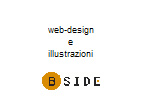







The six rooms forming the Borgia apartment are: 1. The room of the Sibyls; 2. The room of the Creed; 3. The room of Liberal Arts; 4. The room of the Saints; 5. The room of the Mysteries; 6. The room of the Pontiffs. Only the 4th and 5th rooms were painted by Pinturicchio. In the fourth, the most beautiful of all, the artist gracefully represented the stories of some of the martyrs: the dispute of St. Catherine, the Legend of St. Barbara, the Legend of St. Susan, the Visit of St. Anthony to St. Paul the Hermit, and the Martyrdom of St. Sebastian. In the fifth, the Room of the Mysteries, in the lunettes are painted the mysteries of the Resurrection, Epiphany, Nativity, Annunciation, Ascension, Pentecost and Assumption. Worthy of note in the Resurrection is the portrait of Alexander VI.
The apartment was built for Alexander VI Borgia (1492-1503). In 1527, during the Sack of Rome, it was seriously damaged by fierce soldiers of the Bourbons and it is to the credit of Leo XIII that he had it restored in 1889. In 1973 Paul VI was responsible for creating a religiously-oriented Modern Art Gallery, using fifty-five rooms starting with the Borgia appartments. It contains more than 800 works by the most important artists from the 19th century to the present day.
testo